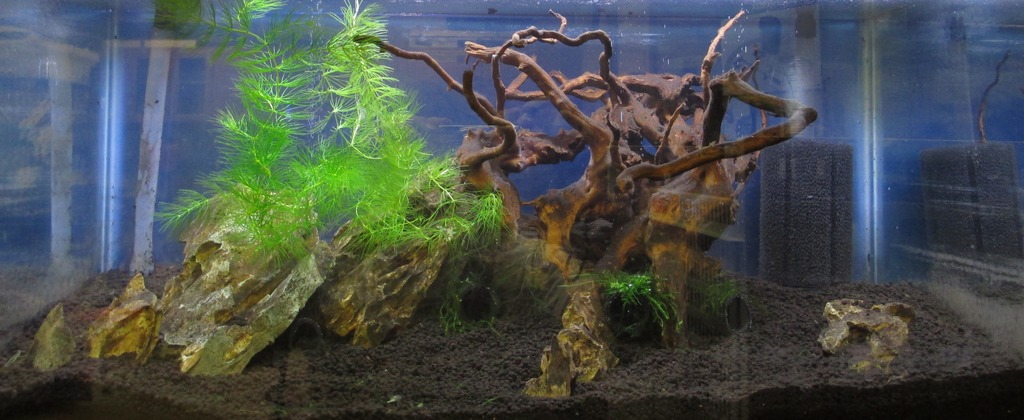I loved that bowl so much. It was my try at the 'natrual tank' idea. It was just a $10 bowl from a craft store, a few cups of unshifted potting soil, and a few cup of ecocomplete (what I happened to have around) to keep the soil down. It started out like this. There were crypts and dwarf sag in there, no fish, shrimp, heater, filter, etc. I it was set up for maybe six months, and I basically only did one or two water changes, but kept it topped off. The only other maintenance I did was Excel a few times a week, arbitrarily fertilized it, scooped duckweed off of it regularly, and added baking yeast 2-3 a week. The only lighting was a 10w CFL in a brooder lamp ~2" from the top, which is an insane amount of light considering the setup. There ended up being all manner of daphnia, detritivores, and other little things in it. I swished a net at a local creek (some random creek running through Denver, not exactly the most glorified thing) and dumped the crud I got into it, and then copepods began to show up. It was glorious.
It's unfortunately not set up anymore. School got crazy with rotations, and I was out of town and/or working 80 hour weeks and unable to keep up tanks. I'm only just starting to get setup again. I'm actually going to mess around with HC in a tank like that to see where it goes. It's probably going to crump on me, but that's what experiments are for, right?
Thanks so much for sharing this, you gave me a great idea. Middle daughter is at MSU, awesome river runs thru campus. Going to have her bottle some for me but her question (chem major

 , you end up multiple posts behind on your own thread
, you end up multiple posts behind on your own thread  .
.
